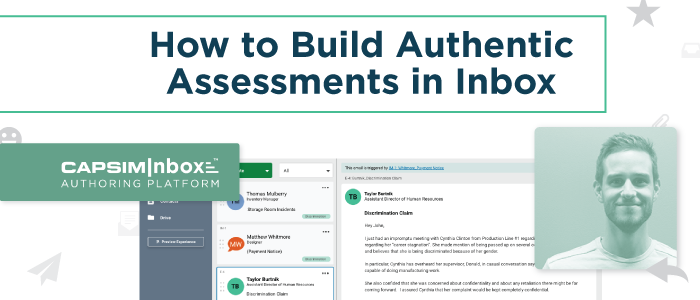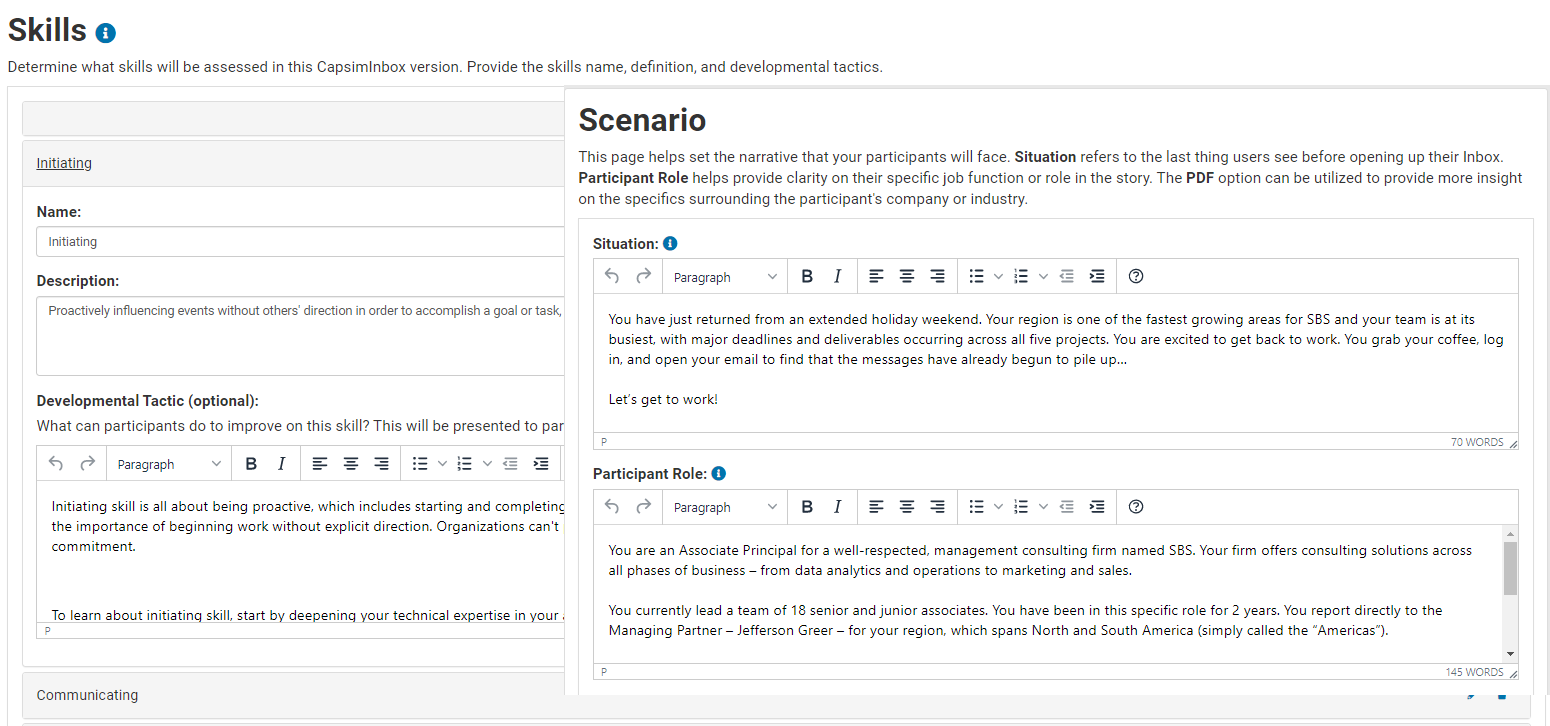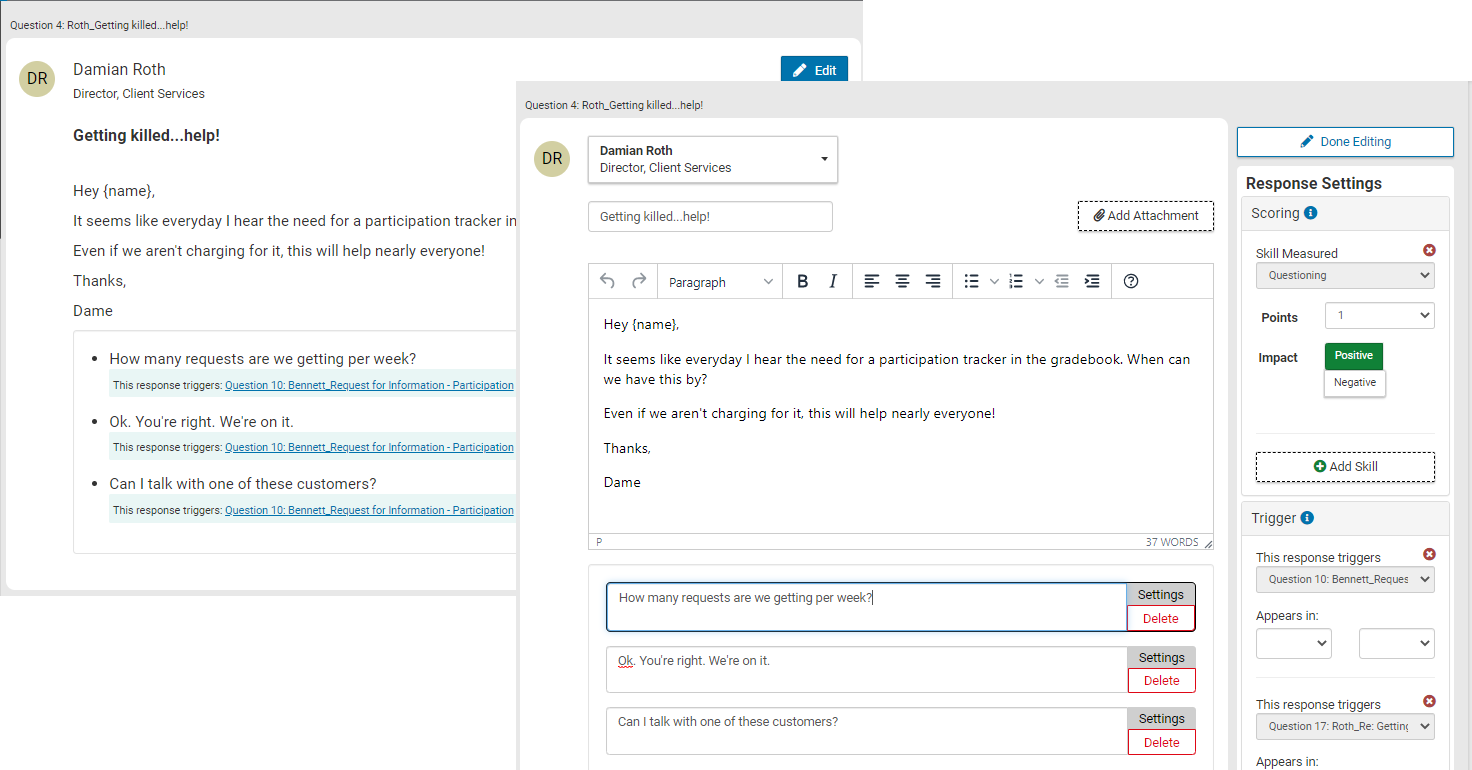How to Build Authentic Assessments in Inbox
July 28, 2020

By Brendan Langen, Director of Product Design & Development at Capsim
A great thing about creating a useful tool is its widespread application. Over the last several months, we have heard from dozens of interested authors who want to tell their unique story in the form of an Inbox simulation. The stories are all different — some outside even what we could have predicted — but each assesses a learner’s performance authentically.
If you think about it, it’s obvious. The email Inbox is a ubiquitous aspect of our daily lives. We receive swaths of emails each day and have to decide what to do with them. Doubly so during the COVID days. Most of our work lives exist within the Inbox, whether it’s Outlook, Gmail, or Hey.
Sharing the endless ways creators leverage the tool is near impossible.–Our audience wants to create simulations in many different ways. University professors want to educate their students and show them their future. Corporate learning experts want to simulate their culture to ensure they hire the right person.
So today, I will talk about how educators can create authentic assessments in the university environment. In a future post, I will dive deeper into how companies can create authentic assessments to view where their employees are in their developmental journeys.
Authentic Assessment in Higher Education as a Means to Measure the Future
From the simplest lens, an Inbox simulation offers the opportunity to peer into the future. The medium (the email Inbox) immediately puts students into the driver’s seat. They are solely in charge of their Inbox – making decisions on their projects, interacting with colleagues, and dealing with the unexpected. Each step of the way, we can measure how well they are doing by watching their actions. In this way, an Inbox is an authentic assessment.
The greatest benefit of an authentic assessment is the value to the student outside the context of school. As instructors, it’s our job to prepare students for the future. Authentic assessments do just that by making students show their work.
Maybe you’ve seen us talk about authentic assessments before. If not, and we need a primer, my alma mater — Indiana University — has written extensively about authentic assessments. According to research from their Center for Innovative Teaching and Learning, “An authentic assessment is one that requires application of what students have learned to a new situation, and that demands judgment to determine what information and skills are relevant and how they should be used.” Sounds like the real world, right?
So what consists of an authentic assessment? Grant Wiggins [1998] stated that an assignment is authentic if it:
-
- Is realistic
- Requires judgment and innovation
- Asks the student to “do” the subject
- Replicates or simulates the contexts in which adults are “tested” in the workplace or civic or personal life
- Assesses the student’s ability to efficiently and effectively use a repertoire of knowledge and skills to negotiate a complex task
- Allows appropriate opportunities to rehearse, practice, consult resources, and get feedback on and refine performances and products
Going back into my days of schooling, my favorite times were working hands-on with a company on a project. Whether we were deciding on the layout and business plan for an urban Target store or designing community recycling incentives, my eyes were opened to the real world. This gave me an inside look at how work was done and what it would take for me to be successful.
Because of this format, my instructors were able to measure not just what I knew and remembered, but also how I thought through a problem. More than anything, that’s what I want to know about someone before I hire them.
This remains the gold standard, but the resources required to create and manage a real-world project are unrealistic for many schools and instructors. In that case, why not create your own authentic assessment? With the CapsimInbox Authoring Platform, it’s easy.
How to Build an Authentic Assessment with CapsimInbox
A classic framing question in the design world is, ‘How might we?’ Design titans like IDEO use this to expand their perspectives and solve tough problems. Let’s apply it here.
How might we create an authentic learning experience for students without the hassle of arranging a real-world project? Let’s take to CapsimInbox!
First, we would ask what our aim is. Seeing as we are here to educate, a component of assessment must exist. Thus, we want to:
- Give our students a project that resembles something they would encounter in the real world, and
- Assess their performance in the activity and provide a baseline for growth.
This requires us to identify the learning objectives for our students. In CapsimInbox, we call these Skills. What do you want to measure?
Then, we must develop a task for our students to indicate they have met the learning objectives. In CapsimInbox, this is the Scenario. From here, we can create individual emails and instant messages to immerse the student in the scenario.
Once we have laid out the scenario, it’s time to identify what good work looks like. In CapsimInbox, these are our Responses. What does a good response look like to this email? What about an average response? What would blow you away? If you have created multiple-choice responses, these replies can branch into new responses. If you want the student to explain their rationale, simply ask them to respond to the email.
Lastly, we create the scoring framework for the assessment. In CapsimInbox, we do this in two ways. First, by setting the Points for each multiple-choice response. Second, by creating a rubric for different levels of written or recorded responses.
At this point, we tie everything together, create branches for different scenarios, and test it live. The CapsimInbox Authoring Platform gives you the chance to view what you’ve created in real-time, so you can see what your students would see before they do.
Create an Authentic Assessment in Hours.
As you return to the classroom (virtually or in-person) with more questions to answer than ever before, there is one constant. Students learn best by doing. Authentic assessments put students in the best position for future success because they have to show their work. What better way to see what someone is capable of?
If you have an idea for an Inbox that you want to build, but want to run it by us first, reach out to authoring@capsim.com. We would love to hear from you.




.png?width=80&name=1-questions%20(1).png)